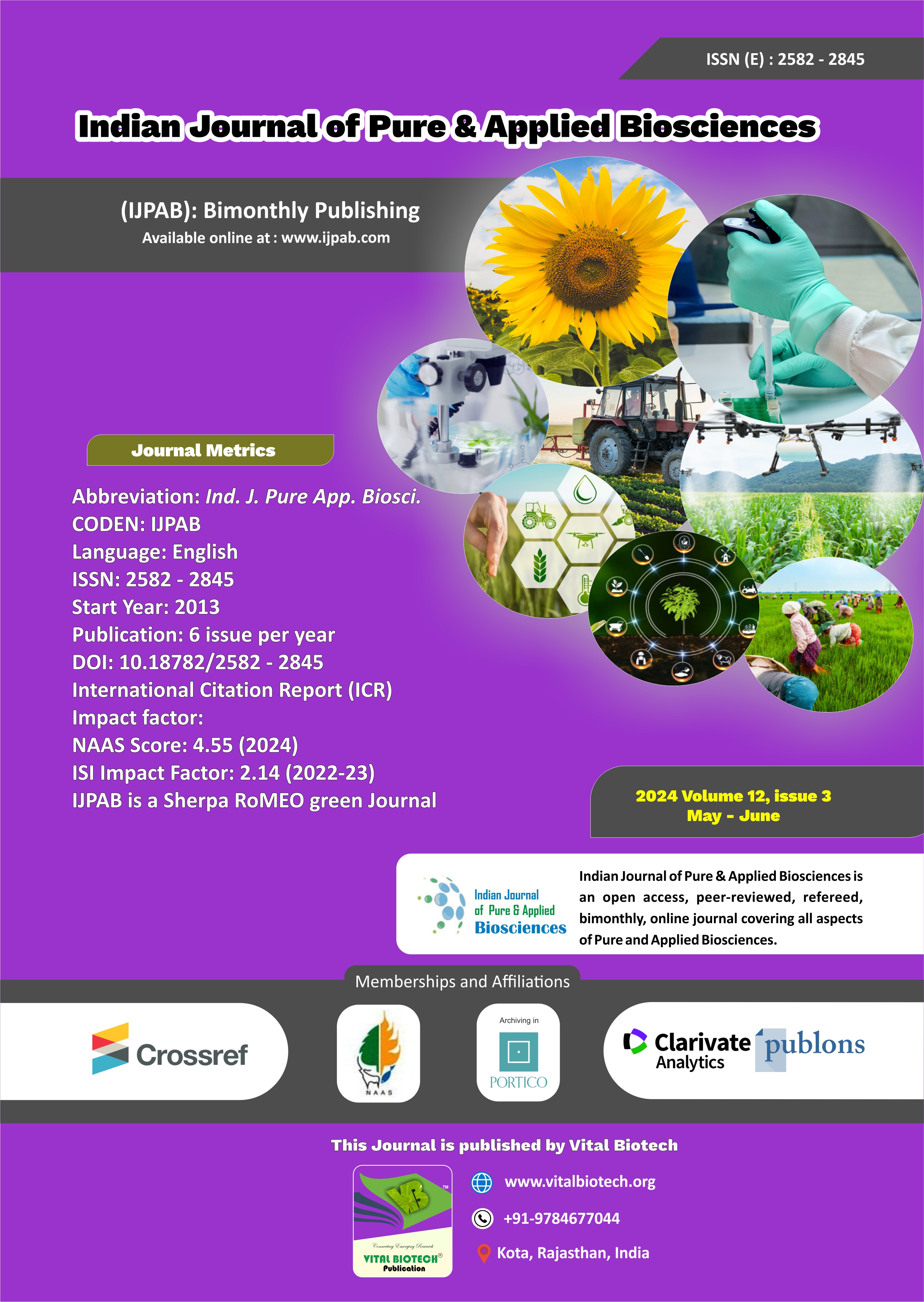-
No. 772, Basant Vihar, Kota
Rajasthan-324009 India
-
Call Us On
+91 9784677044
-
Mail Us @
editor@ijpab.com
Indian Journal of Pure & Applied Biosciences (IJPAB)
Year : 2024, Volume : 12, Issue : 3
First page : (66) Last page : (71)
Article doi: : http://dx.doi.org/10.18782/2582-2845.9085
Non-genetic Factors Associated with 305 Days Milk Yield in Kankrej Cattle
Dhara D. Gor1* ![]() , Jay Prakash Gupta2, Swapnil G. Gajjar3, Jagdish D. Chaudhari4, Arth B. Chaudhari4, Mayank V. Darji4, Ashok Chaudhary5
, Jay Prakash Gupta2, Swapnil G. Gajjar3, Jagdish D. Chaudhari4, Arth B. Chaudhari4, Mayank V. Darji4, Ashok Chaudhary5
1Department of Animal Genetics and Breeding, Kamdhenu University, Anand, 388001
2Department of Animal Genetics and Breeding, Bihar Animal Sciences University, Patna, Bihar, 800014
3National Dairy Development Board, Anand
4Department of Animal Genetics and Breeding, Kamdhenu University, Sardarkrushinagar
5Division of Animal Genetics, ICAR-IVRI, Izatnagar, Bareilly, Uttar Pradesh, 243122
*Corresponding Author E-mail: dharagor704@gmail.com
Received: 11.03.2024 | Revised: 26.05.2024 | Accepted: 13.06.2024
ABSTRACT
The performance data of Kankrej cattle for the present study were collected from the National Dairy Development Board (NDDB), Anand, under the pedigree selection programme (PS) in Banaskantha district of Gujarat state. After the standardization of initial records, the 305DMY records of 6037 Kankrej cattle sired by 54 bulls calved during the period of 19 years from 2003 to 2022 were utilized in the study. The least squares analysis of variance to reduce the nonorthogonality after considering their villages, parity, Age at calving groups, year-month of birth groups and year-month of calving groups were used to analyze the data on 305DMY production trait. The average 305DMY for the Kankrej cow was estimated to be 2302 ± 9.01 kg. The fixed factors such as parity, villages and year month of the calving group considered in the study had significant (p<0.05) effects on the 305DMY traits except for the Age in the calving group (months) and year-month of the birth group. The non-significant effect of the year and month of birth highlighted the adaptive traits of the Kankrej cattle against the extreme temperature in the arid or semi-arid region of North Gujarat. The maximum estimated corrected yield and breeding value were estimated to be 3420 kg and 855 kg, respectively. The increased production performances observed in the study may be the result of the successful implementation of pedigree selection under the field conditions.
Keywords: Kankrej, 305DMY, Pedigree selection, Milk yield, Least-squares Analysis.
Full Text : PDF; Journal doi : http://dx.doi.org/10.18782
Cite this article: Gor, D.D., Gupta, J. P., Gajjar, S.G., Chaudhari, J.D., Chaudhari, A.B., Darji, M.V., & Chaudhary, A. (2024). Non-genetic Factors Associated with 305 Days Milk Yield in Kankrej Cattle, Ind. J. Pure App. Biosci.12(3), 66-71. doi: http://dx.doi.org/10.18782/2582-2845.9085


